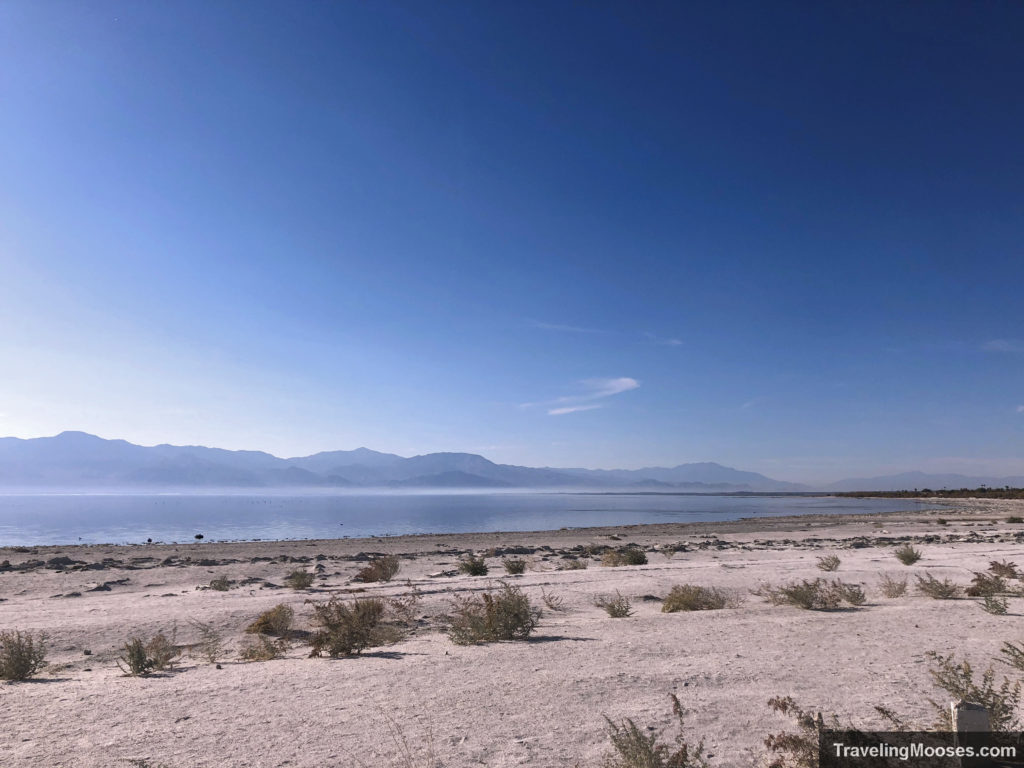
Things to do around the Salton Sea
- Visit the Salton Sea Visitor Center
- Have a picnic in the park
- Bird Watching
- Go on a hike
- Search for dead fish, bones & gills on the beach
- Enjoy the tantalizing smell of rotten eggs
- Take in the beautiful lake views
- Explore abandoned and dilapidated buildings
- Visit the Bombay Beach art installations
- Get to know the locals
- Enjoy a night of camping
- Try your hand at fishing
- Go for a swim in the salty waters
- Try windsurfing on a windy day
- Go on a geocaching treasure hunt
Salton Sea Quick Facts
| Location | 60 miles south of Palm Springs, CA and 118 miles East of San Diego, CA |
| Coordinates | 33.32264, 115.88671 |
| Max Depth | 43 feet |
| Surface Elevation | 236 feet below sea level |
| Surface Area | 343 square miles |
| Created | 1905 |
| Fees | $7 for day use, $5 for boat launch, $20 overnight camping (pricing subject to change) |
| Website | Salton Sea Recreation Area |
What is the Salton Sea?
The Salton Sea is a large man-made body of water located south of Palm Springs, CA. Officially classified as an endorheic rift lake (a drainage basin that retains water and allows no outflow), the Salton Sea was created in 1905 after the Colorado River was mistakenly diverted during the creation of a new irrigation canal.
For two years the Colorado river drained unabated into the area and for years following the incident, water continued to flow into the sea from the runoff of local agriculture.
By the 1950s, the area had turned into a full on resort town drawing visitors from near and far. As time went on, the water flow slowed considerably and the chemicals from the agriculture runoff slowly began killing the sea.
The lack of adequate water replacement meant the salinity in the lake grew, fish died, birds perished after eating the contaminated fish and the toxicity levels continued to increase from the chemicals in the runoff.
Despite efforts by officials to mitigate the issues, Palm Springs Life magazine recently summarized the situation as “[the] Salton Sea derives its fame as the biggest environmental disaster in California history.”
It doesn’t matter where you go in life, as long as you go to the beach.
~Anonymous~
Below is a short video that explains more about the Salton Sea.
Our Experience at the Salton Sea Recreation Area
After spending the day at Joshua Tree National Park, we found ourselves just 30 miles from the famous Salton Sea and decided to check it out.
We arrived in the mid-afternoon and entered the park near the Salton Sea Visitor Center. For a beautiful sunny afternoon, the parking lot was mostly deserted and the Visitor Center was temporary closed as the workers were at a late lunch.
A long row of unused picnic tables lined the beach area and we didn’t see a soul out exploring the beach. We quickly realized why no one was there.
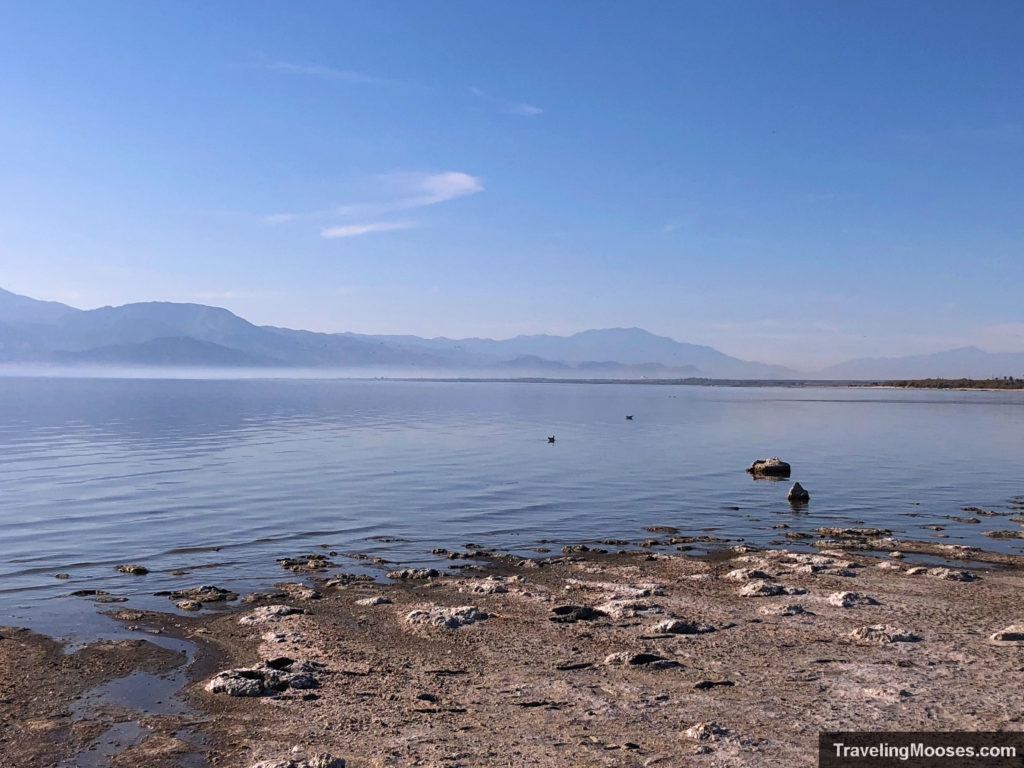
The sulfuric stench
Hydrogen sulfide lies on the bottom of the sea bed, thought to be caused by a combination of fish dying, algae blooms and contamination from agricultural run-off over the years. When conditions are right (high humidity, high temperatures and high winds), elevated levels of the Hydrogen sulfide permeates into the air.
While it’s stronger near the beach, the sulfuric smell in the area frequently spreads throughout the entire Coachella valley and sometimes as far as Los Angeles over 150 miles away. In fact, the smell gets so bad in the area, it’s actively monitored by South Coast AQMD. They’ll send out alerts to their subscribers when the Hydrogen sulfide reaches 30.0 ppb (parts per billion).
The day we were there, it seemed the smell was particularly pungent, but it turned out it was only 2.0 ppb. We found the smell annoying at the relatively small number, but at higher levels it can cause headaches and nausea. There are no known long term health effects from the odor but you may want to check the levels before you head out for a visit.
The Boatmen bugs
After pulling into a parking spot and turning off the car, we were immediately swarmed by a massive amount of small flying bugs. Needless to say, I didn’t want to get out of the car.
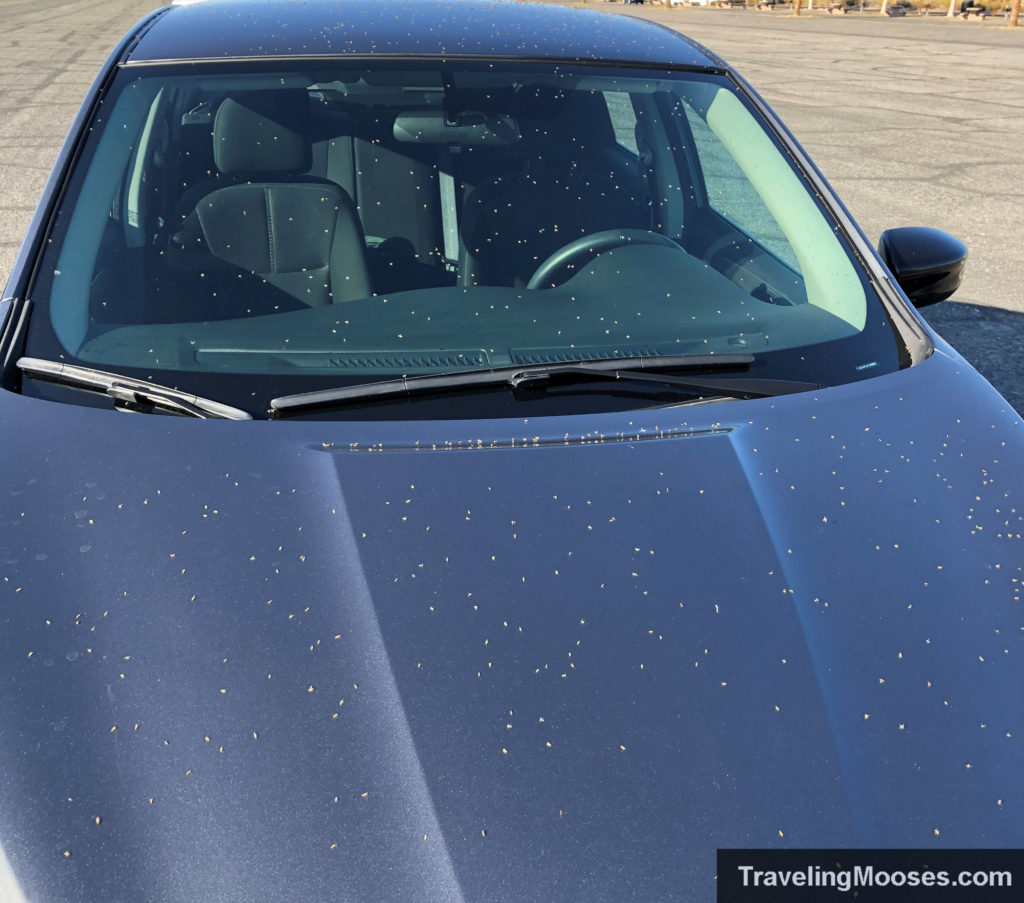
In recent years, the boatmen bug population has soared as there are no longer enough fish to keep the bugs at bay. The bugs are most active in late September throughout October, but we noticed a large quantity of them when we visited in mid-November.
Boatmen bugs breed in all forms of water, but primarily lakes and swimming pools, which is why they love the Salton Sea. They are also attracted to the shiny glare of cars, as they believe it’s a water source.
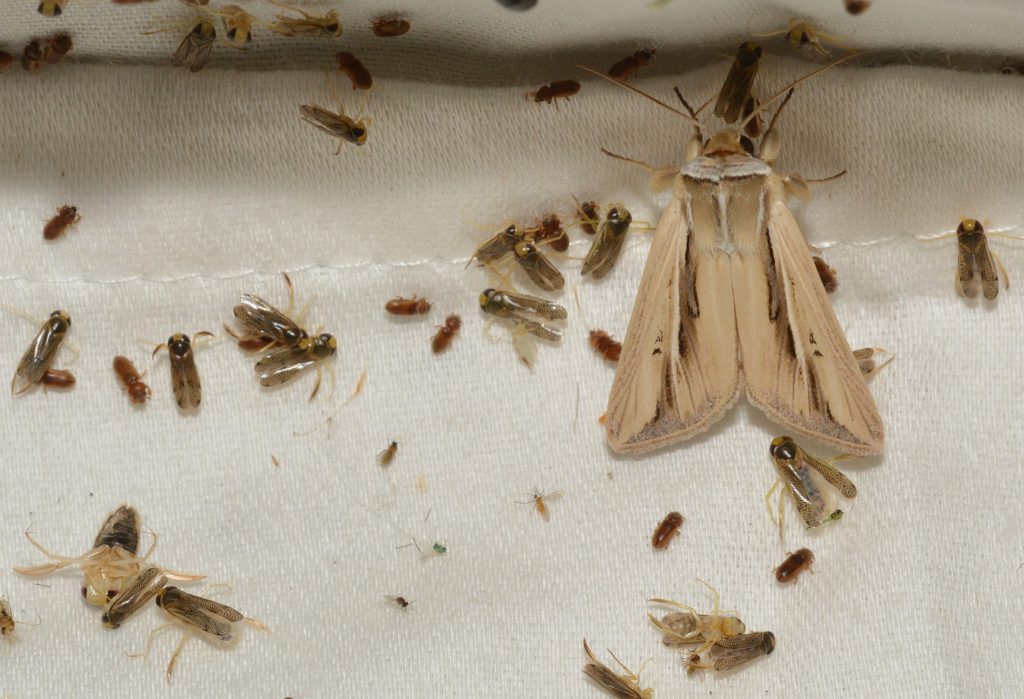
The good news is that once we were out of the car, they left us alone and continued to swarm the shiny paint on our vehicle instead.
Later, when we were driving back to Palm Springs, many of the bugs were somehow able to stay with us on the car for the entire journey.
We were quite amazed considering Palm Springs is 60 miles away.
The deserted beach
With the visitor center being closed, our only option was to take a quick stroll on the deserted beach. The sea itself was beautiful, and we could see how popular it must have been in the 1950’s-60’s when the water was considered “fresh” and the area was teaming with water sports, fishing and many visitors.
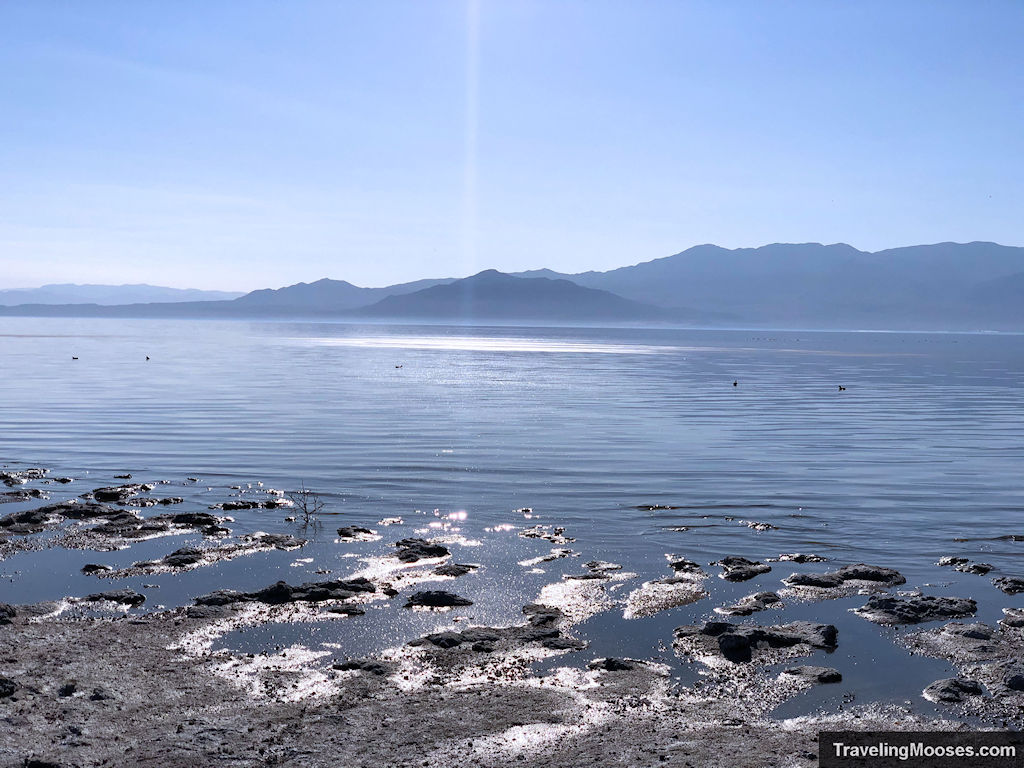
The white “sandy” beaches were beautiful as well, until you realize that you aren’t walking on sand. In fact, it is crunched up bones from the dying fish population over the last 20-30 years. The fish wash up along the shore and decompose into the crunchy surface you’re wandering around on.
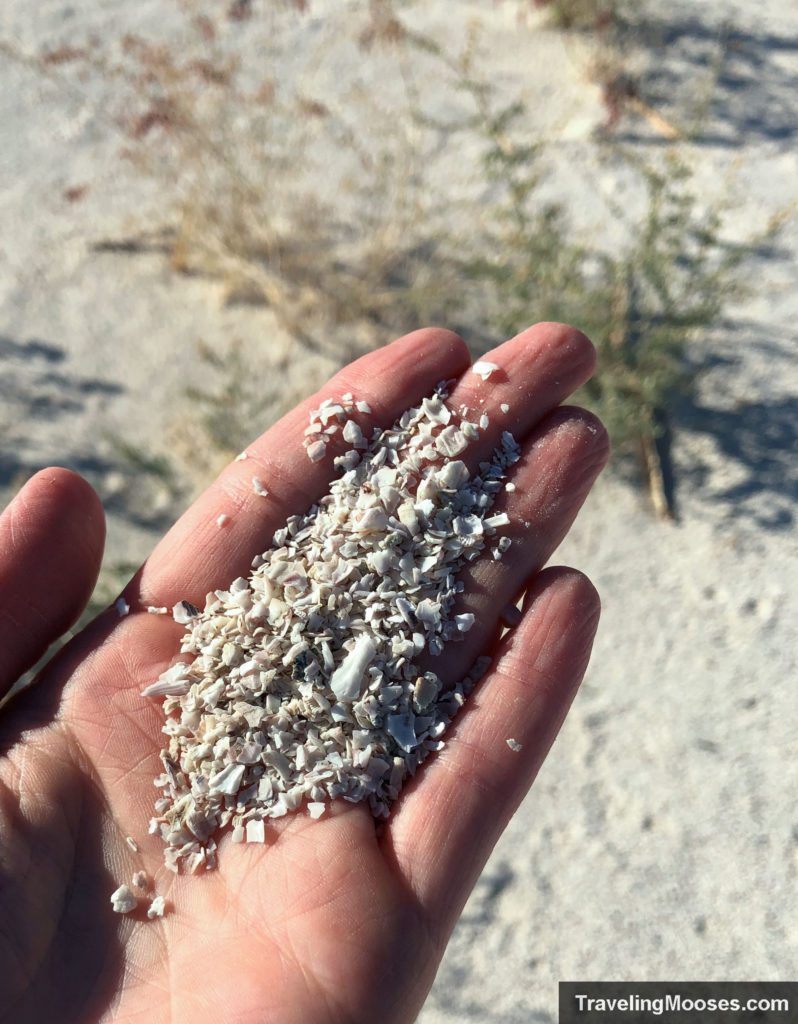
The Salton Sea Visitor Center
While we didn’t get to go inside, we were able to talk to a friendly park ranger outside that gave us information about the Boatmen bugs.
I’m sure he would have been more than willing to give us more information about the area had we asked. The visitor center when open, includes restrooms, a small gift shop, and a history of the area.
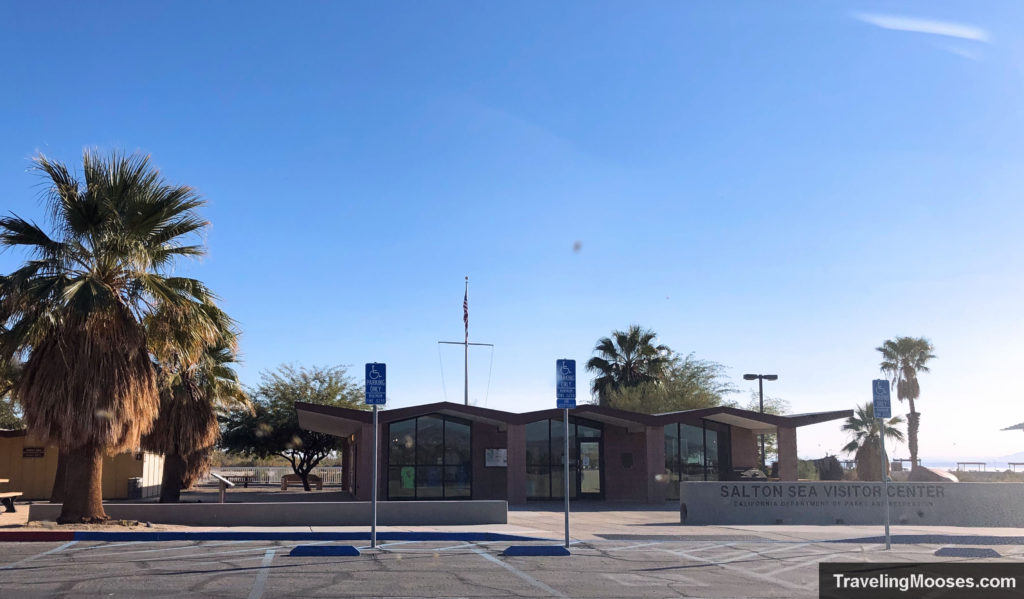
The future of the Salton Sea
While the lake has essentially been on life support for sometime, in 2017, it received its biggest blow yet. That year marked the end of a 15-year water mitigation agreement to supply much needed water to the area.
The reduction in water means the shore will recede rapidly in the coming decades, and leave behind a dry lake bed laced with chemicals from years of runoff. The soil will dry and toxic dust clouds will rage across Southern California, bringing with it potentially devastating health and ecological impacts to local residents and wildlife.
But all is not lost. In August of 2018, new hope sprang to life for the Salton Sea. A 10-year management program was developed by the California Natural Resources Agency to save the area. Locals worry the plan won’t be enough and wonder if full funding will truly materialize.
But for now, three years into the plan (February of 2021), California has finally funded phase 1 of the project. Phase 1 includes over $200 MIL of restoration along the southern edge of the sea, including rebuilding the wetlands, limiting exposed lakebeds to prevent dust. and restoring over 30,000 acres of habitat for local wildlife.
Learn more about the Salton Sea
- Documentary: Plagues & Pleasures on the Salton Sea
- Documentary: Miracle in the Desert: The Rise and Fall of the Salton Sea
- Restoration Project: Salton Sea Management Program
- Salton Sea History: Timeline of creation
Visit or Skip?
Rating: 2.0 Mooses

This was one place where we can truly say once was enough. You could spend a half day exploring the entire lake, or you could pop in for 30 minutes and say enough is enough. We chose the latter and were very happy with our choice. If we find ourselves back in Palm Springs again (which we loved), the Salton Sea will not be on our list of stops.
- What we liked
- The views of the lake were deceivingly gorgeous
- Walking on the beach was unique and crunchy
- We enjoyed seeing an area that was rich in history
- What we didn’t like
- The sulfuric smell was awful
- The boatmen bugs were out in force when we were there
- It wasn’t a relaxing place to spend a day on the beach
- The moment we realized the unique and crunchy sound was dead fish bones
Verdict: If you’re in the area stop for a quick visit, but don’t linger.
